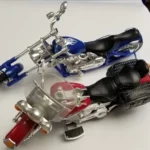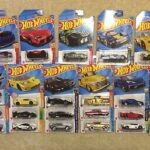The Rarest Matchbox Toy Cars: A Collector’s Dream
Introduction
Matchbox cars have been a staple in the toy industry for over seven decades, captivating both children and adult collectors with their detailed miniatures of real-life vehicles. While millions of Matchbox cars have been produced since the brand’s inception in 1953, a select few have become the holy grail for collectors. These rare Matchbox toy cars, often produced in limited quantities or featuring unique variations, can command high prices and are prized for their scarcity and historical significance. This article explores the fascinating world of the rarest Matchbox cars, delving into their origins, unique characteristics, and the stories behind their rarity.
The Beginnings of Matchbox Cars
Lesney Products and the Matchbox Brand
The story of Matchbox cars begins with Lesney Products, a company founded by Leslie Smith and Rodney Smith in 1947. Initially producing small die-cast items, Lesney Products made a significant impact on the toy industry with the creation of the Matchbox brand in 1953. The inspiration came from Jack Odell, who designed a miniature road roller that could fit inside a matchbox. This innovation led to the birth of the Matchbox 1-75 series, which featured 75 different vehicles that were small enough to fit inside a matchbox, hence the brand name.
Early Success and Expansion
The Matchbox 1-75 series quickly gained popularity due to its affordable price, high-quality craftsmanship, and the appeal of miniature replicas of real vehicles. By the late 1950s, Matchbox cars were a global phenomenon, and Lesney Products continued to expand the range, introducing new models and variations. The company’s commitment to detail and realism set Matchbox apart from other toy cars, making it a favorite among children and collectors alike.
Factors Contributing to Rarity
Several factors contribute to the rarity of certain Matchbox cars, making them highly sought after by collectors. These include production errors, limited production runs, unique variations, and special editions. Let’s explore these factors in more detail.
Production Errors and Variations
Production errors and variations can significantly increase the value and rarity of a Matchbox car. These errors might include incorrect paint colors, mismatched wheels, or other manufacturing mistakes that resulted in a limited number of defective units being released. Collectors often prize these error cars for their uniqueness and rarity.
Limited Production Runs
Some Matchbox cars were produced in limited quantities, either as part of a special promotion or due to low initial production numbers. These limited production runs make the cars rare and highly desirable among collectors. Models that were discontinued early or produced during transitional periods are often the hardest to find.
Special Editions and Promotional Models
Matchbox has released numerous special editions and promotional models over the years, often in collaboration with other brands or for specific events. These special editions are typically produced in smaller quantities and may feature unique packaging, decals, or other distinguishing features that set them apart from regular production models.
The Rarest Matchbox Cars
Now, let’s delve into some of the rarest and most valuable Matchbox cars ever produced. These models are considered the crown jewels of Matchbox collections and are often the subject of intense bidding wars at auctions.
1. Matchbox No. 30 Dodge Wreck Truck (1965)
The 1965 Dodge Wreck Truck, specifically the model featuring a “BP” decal on its doors, is one of the rarest Matchbox cars. This variation was produced for a very short time before the decals were changed to a generic “BP” logo. The combination of the specific decal and the limited production run makes this truck a prized possession for collectors.
2. Matchbox No. 22 Green Jaguar D-Type (1957)
The Green Jaguar D-Type, released in 1957, is another highly sought-after model. Most Jaguar D-Types produced by Matchbox were painted in British Racing Green, but a very small number were painted in a lighter, almost lime green color. These rare green variations are incredibly valuable and are considered one of the most prized Matchbox cars from the 1950s.
3. Matchbox No. 41 Gold Dodge Challenger (1975)
The Gold Dodge Challenger, produced in 1975, is known for its striking gold color and limited production run. This model was part of the Superfast range, which featured cars with low-friction wheels designed for high-speed racing. The gold version of the Dodge Challenger was only produced for a short time, making it one of the rarest Matchbox cars from the Superfast era.
4. Matchbox No. 75 BP Exploration (1970)
The BP Exploration model, released in 1970, is notable for its unique design and limited production. This model was created as a promotional item for BP (British Petroleum) and featured detailed decals and a distinctive color scheme. Due to its promotional nature, only a small number of these models were produced, making them highly coveted by collectors.
5. Matchbox No. 27 Cadillac Sixty Special (1961)
The Cadillac Sixty Special, released in 1961, is one of the rarest Matchbox cars from the early 1960s. This model was part of the King Size range, which featured larger and more detailed vehicles. The Cadillac Sixty Special is particularly rare due to its low production numbers and the fact that it was only available for a short time.
6. Matchbox No. 55 Ford Galaxie Fire Chief Car (1967)
The Ford Galaxie Fire Chief Car, released in 1967, is another rare and valuable model. This car was produced with both white and red paint variations, but the white version is significantly rarer. The white Ford Galaxie Fire Chief Car is considered one of the most elusive Matchbox cars from the 1960s.
7. Matchbox No. 35 Merryweather Marquis Fire Engine (1960)
The Merryweather Marquis Fire Engine, released in 1960, is a highly sought-after model due to its intricate design and limited production run. This fire engine was part of the regular wheel series and featured a detailed ladder and hose assembly. The model’s rarity is further enhanced by its short production period and the complexity of its design.
8. Matchbox No. 43 Hillman Minx (1961)
The Hillman Minx, produced in 1961, is one of the rarest Matchbox cars from the early 1960s. This model was available in various colors, but the pink version is the rarest. The pink Hillman Minx is highly prized by collectors due to its unique color and limited production run.
9. Matchbox No. 69a Commer 30 CWT Van (1960)
The Commer 30 CWT Van, released in 1960, is a rare model due to its limited production run and unique design. This van was part of the regular wheel series and was available in various liveries, including the “Dunlop” and “BP” versions. The “Dunlop” livery is particularly rare and highly sought after by collectors.
10. Matchbox No. 8c Ford Mustang (1965)
The Ford Mustang, released in 1965, is one of the most iconic Matchbox cars. This model was produced in various colors, but the rarest version is the white Mustang with red interior. This color combination was produced for a very short time, making it one of the most valuable Matchbox cars from the 1960s.
The Collector’s Market
The market for rare Matchbox cars is vibrant and competitive, with collectors constantly seeking to add the most elusive models to their collections. Auctions, both online and in-person, are common venues for buying and selling rare Matchbox cars. Prices can vary significantly based on factors such as condition, rarity, and demand.
Factors Influencing Value
Several factors influence the value of rare Matchbox cars:
- Condition: The condition of the car is one of the most important factors. Cars in mint condition with their original packaging can command significantly higher prices than those with visible wear or missing parts.
- Rarity: The rarity of the model, including any unique variations or production errors, can greatly impact its value.
- Provenance: The history and provenance of the car can also influence its value. Cars with documented histories or those that were part of significant collections are often more valuable.
- Demand: The demand for certain models can fluctuate based on trends in the collector market. Highly sought-after models may see increases in value over time as more collectors seek to acquire them.
Notable Auctions and Sales
Several notable auctions and sales of rare Matchbox cars have made headlines in the collector community. For example, in 2012, a rare 1965 Dodge Wreck Truck with the “BP” decal sold for over $10,000 at an auction in the United Kingdom. Similarly, a rare Green Jaguar D-Type from 1957 fetched a high price at an auction in the United States.
Collecting Trends
Collecting trends in the Matchbox community can vary, with some collectors focusing on specific eras, models, or themes. For example, some collectors specialize in early Matchbox cars from the 1950s and 1960s, while others focus on the Superfast range from the 1970s. Additionally, some collectors seek out unique variations or production errors, while others look for special editions and promotional models.
Preserving and Displaying Rare Matchbox Cars
For collectors of rare Matchbox cars, preserving and displaying their collections is a crucial aspect of the hobby. Proper care and storage can help maintain the condition and value of the vehicles.
Storage Tips
- Avoid Exposure to Sunlight: Prolonged exposure to direct sunlight can cause fading and damage to the paint and decals of Matchbox cars. It









